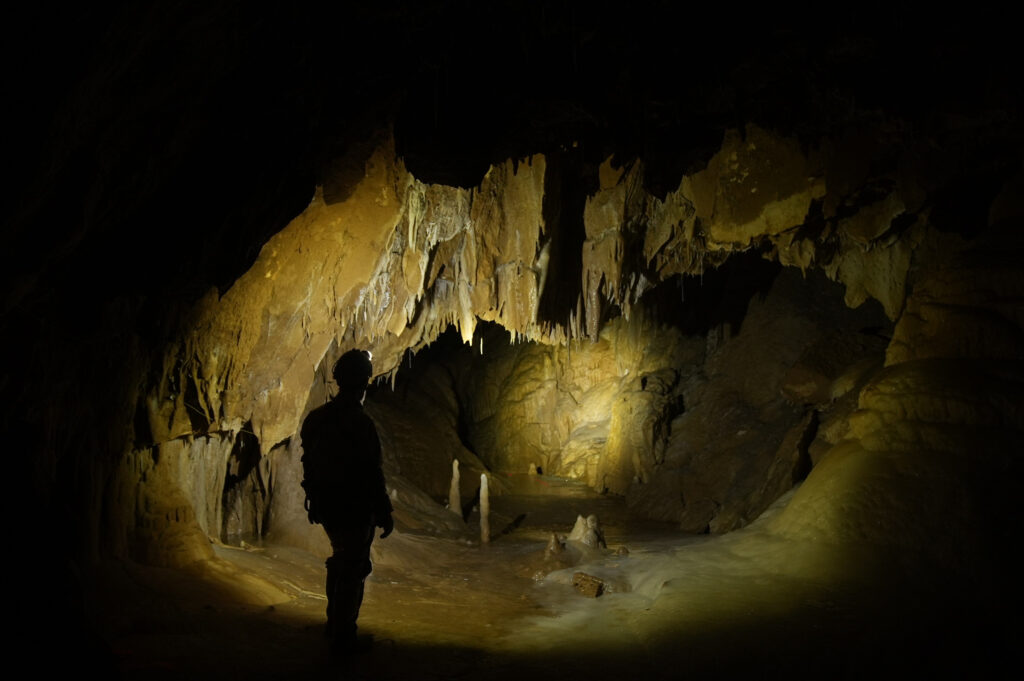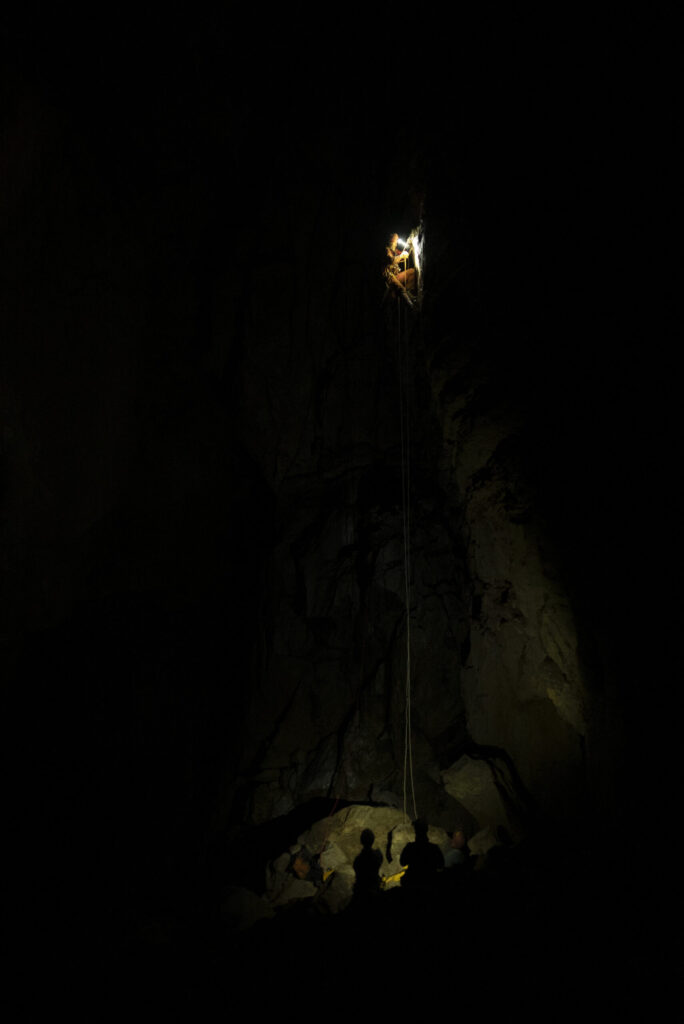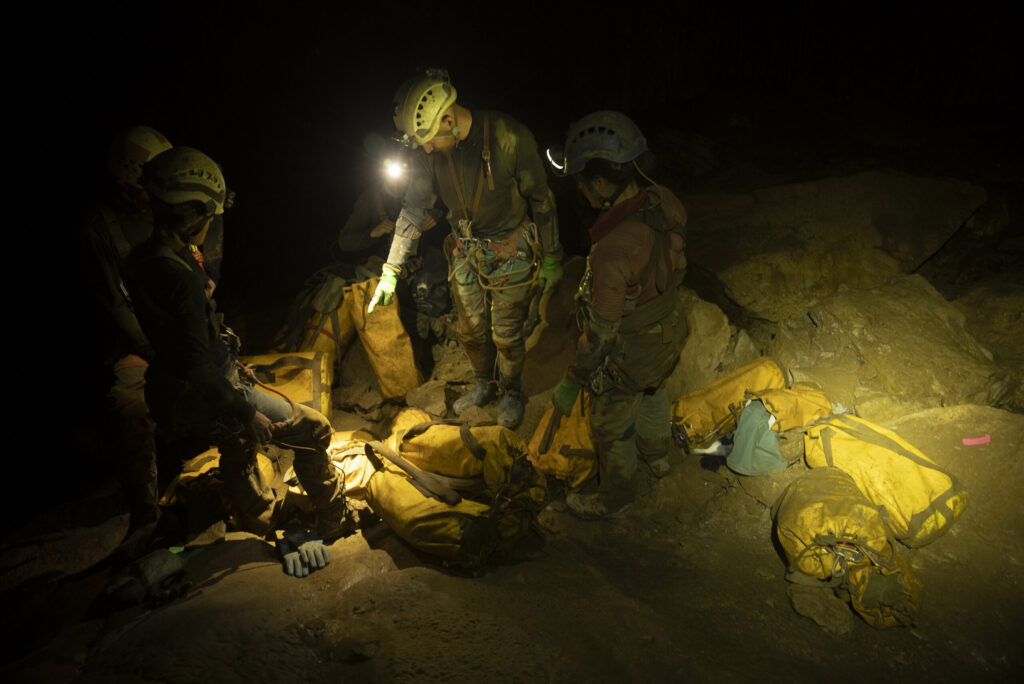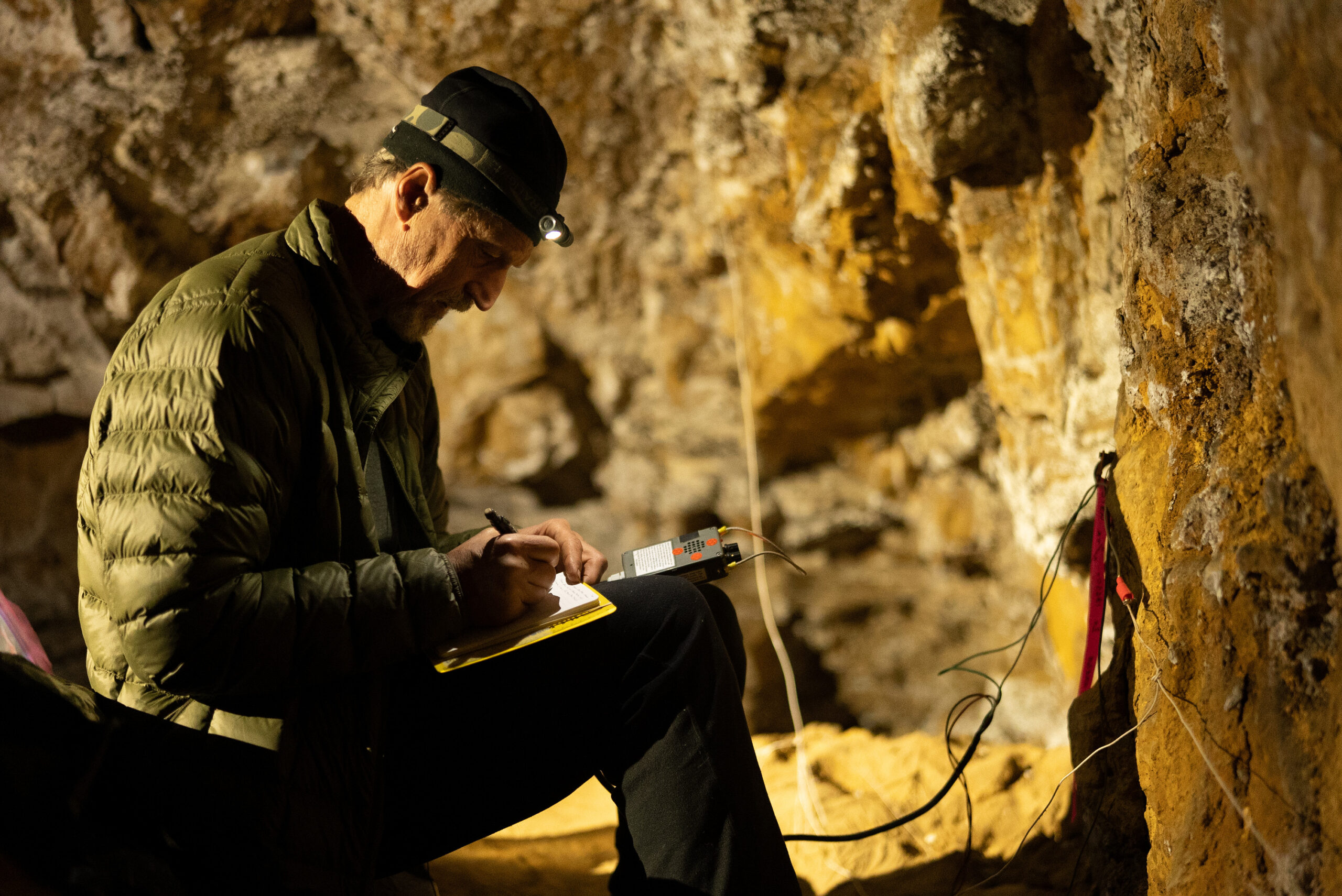In true National Geographic fashion, Explorer: The Deepest Cave follows Dr. Bill Stone and his team into the deepest recesses of the unknown.
The one-hour special follows renowned cave explorer Bill Stone as he and his team push the boundaries of what has ever been done before as they attempt one of the greatest achievements of modern exploration — to set a new world record by venturing into the bottom of what is thought to be the deepest cave in the world.
Deep in the uncharted depths of Cheve Cave in Mexico, the expedition team must navigate through over 12 miles of unexplored tight, twisting passages, sometimes in complete darkness, where one mistake can be deadly. During the dangerous and highly technical adventure, not only is Bill and the team trying to break the world record for venturing deeper than any other person on Earth, but the expedition’s other goal is to map everything the team sees to create both traditional 2D maps as well as CGI 3D-models relative to the surface topography so others can study the cave and discover what its future holds.

Explorer: The Deepest Cave premieres May 30, 2022, on Memorial Day. In the meantime, Dr. Stone sat down with Innovation & Tech Today to talk about the expedition and how technology has changed cave exploration.
I&T Today: I know you said that over the years you’ve lost four colleagues. Does that ever give you pause, make you think a little extra hard about what you’re doing, knowing the risks that are involved?
Bill Stone: Oh, absolutely. There isn’t a team meeting that goes by at the surface where we don’t remind people that safety is their concern. We actually have three primary rules. And I’ll spell them out as frequently as I have to at the entrance. Number one is, nobody gets hurt. Number two, everybody has a memorable time. Number three, we bring home as much data as we can.
Because that is what defines exploration. We’re not there to go on a tourist trip. We’re there to get new data of what exists beyond. So, those are the three big things that separate this from about any other human endeavor I can think of.
Does a fatality stick with you? Oh, yeah. There’s no question about it. There is still a grave marker at the -800 meter level of where this guy died in 1990. Why? Because he made a mistake on a rope. Well, you know what? When you show up in Cheve Base Camp, or any expedition I’m on, there is a rope course set up in the nearby trees that emulates every single maneuver you are going to have to do on rope underground. And you have to do it with a 20-kilogram pack and you have to do it in under a specified time period.
And if you can’t do that with your peers watching you and do it safely, you don’t go underground. You know? Now, most people when they get there, this is second nature to them. They’re professionals at that level. Although it’s an amateur sport, their skill level is highly professional.
And so, in 50 years of doing this I’ve only seen a couple of times when people have shown up and not been prepared. But that’s one way that we prevent accidents on rope is by going through this review process and making sure that everybody does that. And then, regularly reminding them that you need to be looking out both for yourself and everybody else on the team.
We have four criteria for somebody to be selected to be on the team. One, they have to be technically competent. Two, they have to be safety conscious of both themselves and their teammates. Three, they have to be team players, which means no egotists.

I&T Today: Something that really stood out to me watching was that, I think it was 40 meter high hole in the roof toward the end of the show.
BS: 75.
I&T Today: Geez.
BS: Yeah. That’s meters, by the way.
I&T Today: I was watching and I could never figure out, how do you even get up there? I get that you’re drilling into walls and things, but how do you ascend up a dome?
BS: Yeah. Yeah. We initially took a lot of ideas from the classical big wall climbing in Yosemite, and then we perfected it a bit.
The big thing about caves that nobody who is a high altitude or even a big wall climber realizes is that limestone does not have cracks. So, you can’t use pitons. You can’t use cams. You can’t use wedges. None of those traditional things that climbers use will work. And so, we’re stuck with using rock bolts.
We have refined it to where the technology that we’re using, we have a couple different kinds that we use, some of them are permanent, some of them are removable, some of them are screwing. It depends on the kind of rock that you’re dealing with.
And that’s the big problem if it was just a mechanical, put a bolt in, put your etriers on, put your adjustable bases on, and ratchet yourself up, and put the next bolt in, okay, that’s repetition. When you see somebody on the wall doing this, the first thing that comes to your mind is, “Holy cow, these people have got a lot of junk on them.”
I&T Today: Yeah, I’ve always thought that! It seems like a lot to haul?
BS: There’s stuff hanging out all over the place. There’s drills, there’s hammers, there’s blow tubes, there’s wrenches, there’s rock bolts, there’s etrier, stepladder, slings, there’s adjustable ratchet slings, there’s a whole host of stuff. There’s static lines, there’s dynamic lines, there’s quickdraws like you use in mountaineering. All this stuff, and you’re sitting up there with this all hanging off you. And frequently you’re going up something that is completely overhung and has two inches of mud on the wall. And the rock underneath it is hollow and weathered.
I’ll give you an example, on that very scene that they showed at the end of the cave, they didn’t film this one scene because the cameraman was up on the wall at the time. But the lady who was there, Gillie Oliver, was out leading, and she put the sling around this projecting rock thinking, “Okay. I’m going to use that as a backup in case my bolt pulls out,” because the rock was so bad there. Well, as soon as she tugged on that, about 800 pounds of rock, just silently fell away from the wall. And I was back on the slope where the camera later was, shooting some of the other scenes. And so, I was probably a hundred meters away. But I watched it fall silently for two- and one-half seconds.
I&T Today: Wow. That’s terrifying to think about.
BS: And then there was this crashing echo that just propagated up and down the room. And the first question that I had was, “Oh, I think I left some of my vertical gear down there.” I wasn’t thinking like, “Boy, it sure is lucky that I’m over here and not down there.”
That’s the kind of thing that you have to worry about when you’re up there on the wall. I’m glad you asked that question because, to me, that was the one place on that expedition where your mind was 110% in focus on what you were doing. If I looked down between my legs, I didn’t see anything but blackness, and 70 meters of nothing.
I&T Today: Yeah.
BS: A two-and-a-half second free fall to the floor. And the rope was muddy, the quickdraws were muddy, the bolts were muddy. And so, you just saw this string of things shaking below you, and you’re sitting there with mud all over your hands.
And you’re trying to think, “Where am I going to put the next bolt out?” And meanwhile, my belayer is down there going, “You only got five meters of dynamic rope left. I sure hope you’re going to top out soon.”
And I’m sitting there going, “There’s nothing here. Where am I…” and then, how are you going to get out of this if you don’t have a place to set an anchor up there to do your repel out?
And I didn’t have enough rope on me to reach the floor of the cave at that point. The pressure was really on. And we finally managed to, just at the last minute, make it up to that ledge up there.
I&T Today: And there was nothing?
BS: No. And that is in a capsule. That’s a nutshell of true exploration. You don’t know. You’ve got to pay the price to see the answer.

I&T Today: How has technology changed what you guys do when you go into a cave?
BS: It has changed everything. Everything.
I’ll give you one example. And this is one of many. When we first started cave exploring, we were using something called a minor’s cap lamp in 1967. This was something that minors used in the 1800s. They hauled calcium carbide. You added water to it, and it made a jet of acetylene, just like in an acetylene torch.
And you lit that up, and it glows super bright. And if you put a reflector behind it and you’ve got a light that lasts for about five, six hours. When we went on early expeditions to Cueva Cheve, we would carry a thousand pounds of carbide for that team. And you would use it up and have to carry all the way out, because we were being environmentally conscious.
You don’t want to have that chemical in a cave. So today, just to give you an idea, in the palm of my hand, I can hold enough lithium-ion batteries to drive hyper-efficient LED lights to stay underground for a month, in my hand. That’s just one example. And all the climbing technology that we just talked about, none of that existed when we first started.










